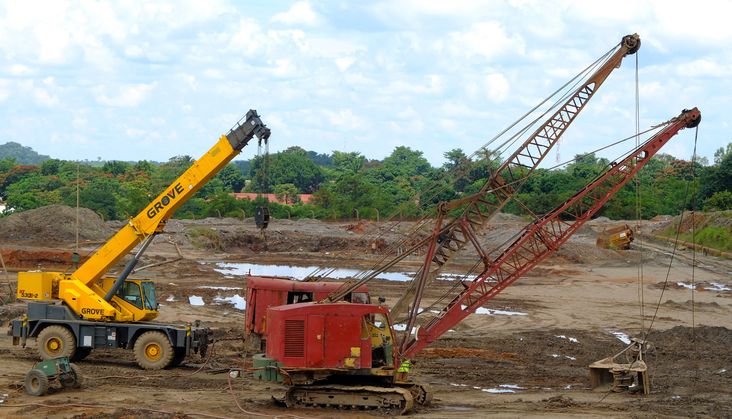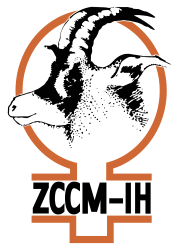
One of the copper industry’s most influential players has called the moment an “inflection point” for the metal, as Africa sees a surge of investment and renewed interest in copper mining and processing.
High global copper prices and rising demand are reigniting investment in exploration in Africa’s copper hotspots, with the DRC and Zambia both attracting significant capital funding and lesser-known producers like Uganda, where copper mining had collapsed, looking to a revival.
In a 3 May statement from the co-chairs of the DRC’s Kamoa-Kakula complex, Robert Friendland and Yufeng Sun, announcing further expansion that will make it the third-largest copper mining complex in the world, Friedland said that copper had reached an “inflection point”.
“We are at an inflection point for the copper industry . . . one where we must determine how to meet growing demand, even as discovering and building new mines becomes ever more challenging,” said Friedland, who is also Ivanhoe Mines co-chairperson.
“Humanity will likely require as much copper in the next 22 years alone as it did through this point in its history – [about] 700-million tonnes – just to maintain three per cent gross domestic product growth,” said Friedland.
According to the statement, the expansion of Kamoa-Kakula has entered a third phase this month that will see it increase its annual copper production to 600,000 tonnes by the fourth quarter of 2024.
Kamoa-Kakula copper project is a joint venture between Ivanhoe Mines, China’s Zijin Mining Group, the DRC government and Crystal River Global that is meant to create both shareholder value and long-lasting economic and social benefits for the country, thanks to investment into both the mining operations and beneficiation of the metal before it is exported.
As part of the mega expansion project, two new underground mines – known as Kamoa 1 and Kamoa 2 – and the initial decline development at Kakula West will be developed, according to Ivanhoe Mines. Adjacent to the two new mines at Kamoa, a new, five-million-tonne-a-year concentrator plant will be established, taking total processing capacity to more than 14-million tonnes a year. Power for the expansion will be hydroelectric, through a partnership with the DRC’s Inga II hydro project, the Kamoa-Kakula statement said.
In Zambia, Africa’s second-largest copper producer after the DRC, UK-based mining company Moxico Resources plans to expand its majority-owned Mimbula copper mine, with a $100m investment.
Moxico started low-cost production in April 2020 at the Mimbula Copper Project, a copper-rich oxide and sulphide deposit located in the Zambian Copperbelt on the outskirts of Chingola town.
Zambia’s copper output fell to 800,696 tonnes in 2021 from 837,996 tonnes in 2020 but its new president Hakainde Hichilema has committed to creating a far more inducive investment climate for miners and mining exploration.
Hichilema, who took over in August 2021, won widespread support in Zambia’s “copperbelt” region, due to his supportive stance towards the industry.
Hichilema announced in April that Zambia’s government was close to finding a private investor for its Mopani Copper Mines, one of the country’s biggest. Zambia has been looking for a buyer after taking on $1.5bn in debt to buy Mopani from Glencore in January 2021.
Also in April, Uganda began the official hunt for an investor to revive copper and cobalt production at its defunct Kilembe mine.
“With the increase in demand for copper and cobalt worldwide, the government of Uganda through the privatisation unit wishes to implement the development of Kilembe mines,” the country’s Ministry of Finance, Planning and Economic Development said in an Expression of Interest document.
Kilembe is Uganda’s largest copper mine, with estimated deposits of copper in excess of four million tonnes. The mine began operations in 1952 and was closed in 1982 when exploration ceased due to depressed world copper prices.
“Thereafter, the company operated on a care and maintenance basis in anticipation that mining will resume at a future date when global prices are more favourable,” the ministry said.
Uganda expects winning bidders to also process Kilembe’s copper output for domestic use. The government wants local copper to be used in the manufacture of electrical wires, transformers and coils to bolster its manufacturing industry, as well as for export. These developments are geared toward tapping into the current global demand for copper with higher returns.
In March, Fitch Ratings raised its copper price assumptions from $8,500 to $9,500 per tonne in 2022 and to $8,500 in 2023, citing increased post-pandemic demand, tight markets and short-term supply disruptions, particularly due to the Russia-Ukraine conflict.
“Copper is the only commodity where we increased our long-term assumptions due to its use in electrification,” said Fitch Ratings in its latest Global Metals and Mining Price Assumptions.
Beyond 2025, Fitch pegs copper prices at 7,000 US dollars – a rise from an earlier projection of $6,700. “Some commodities also benefit from increased longer-term demand due to their role in global decarbonisation,” said Fitch.
According to audit firm Ernst and Young (EY), the average copper price of $6,726 per tonne over the last decade has been lower than the usual “incentive price” which ranges between $7,000 and $8,000 per tonne for new project developments.
EY also shares similar sentiments affirming the industry’s competitiveness in the longer term, driven by electric vehicle adoption, renewable power generation and green infrastructure.
“The strong demand outlook and recent price uptrend provide miners opportunities for aggressive exploration,” said EY. According to the firm, global copper reserves grew at a compounded annual growth rate of 3.3%, in line with 3.7% annual compounded growth in exploration budgets.
Source: https://www.theafricareport.com/202949/africa-renewed-interest-in-copper-mining/
